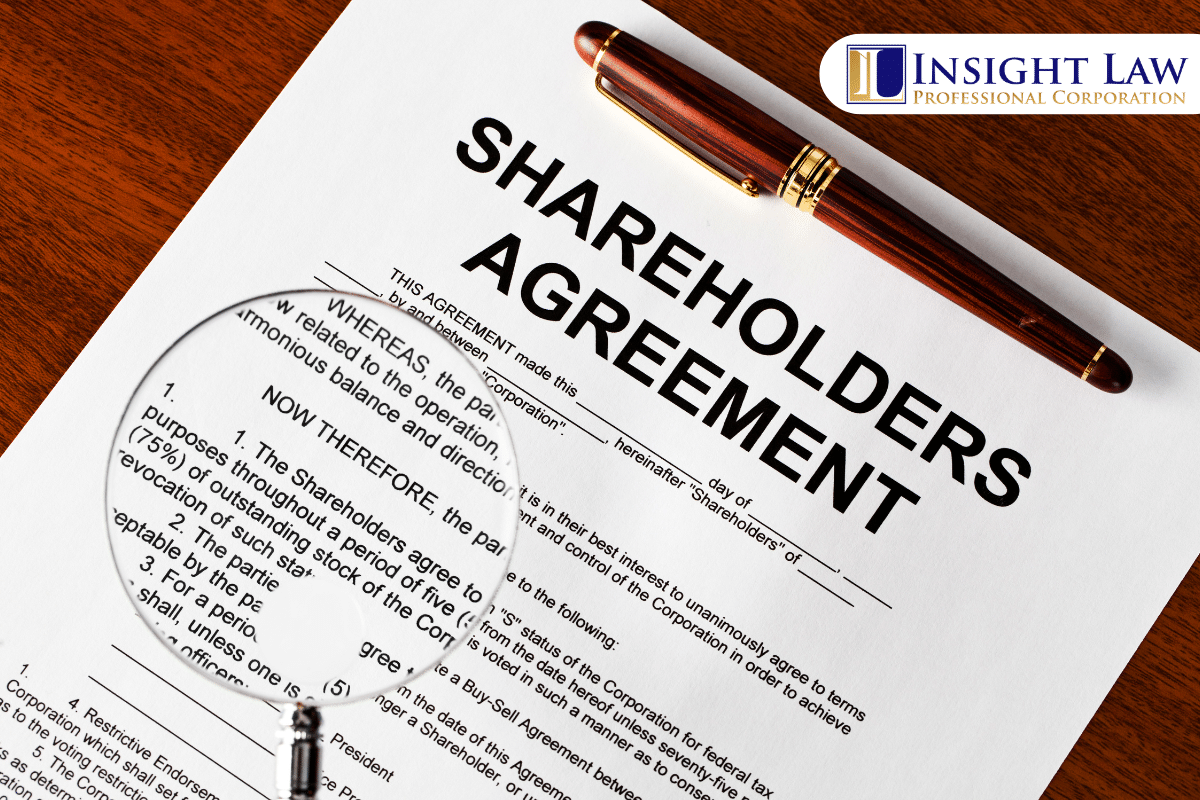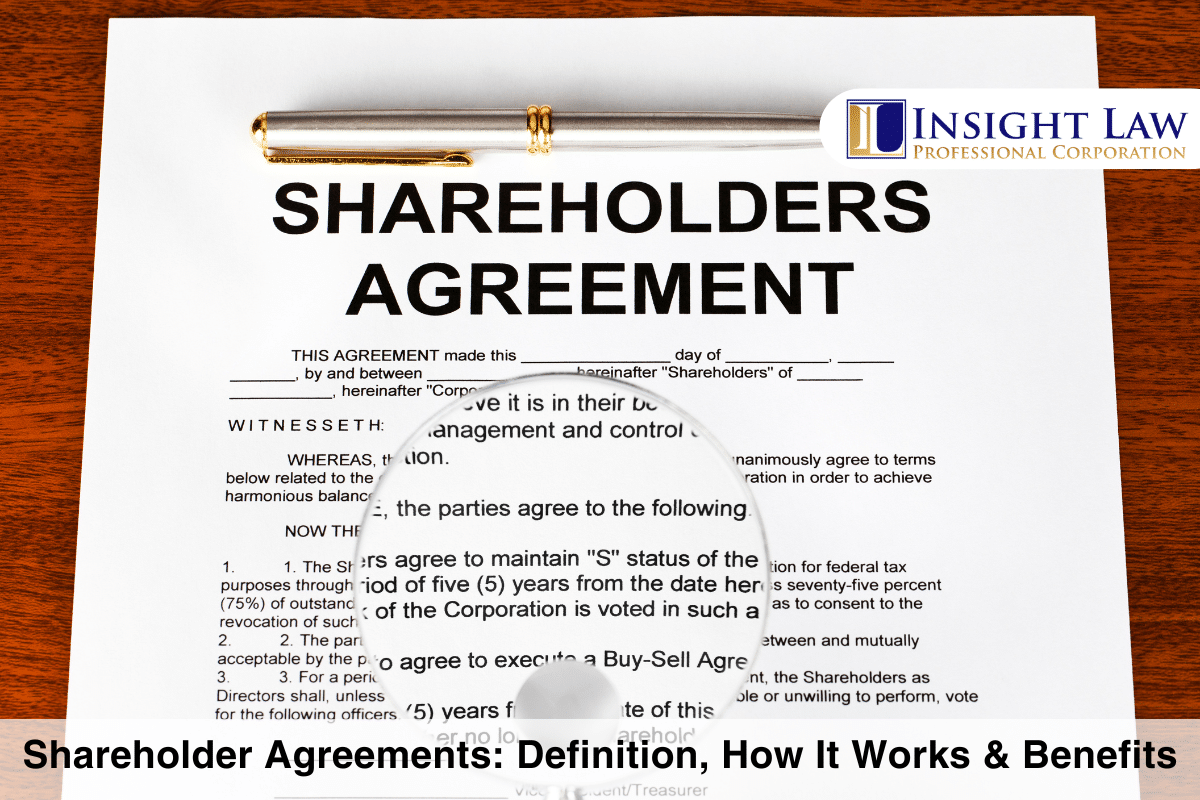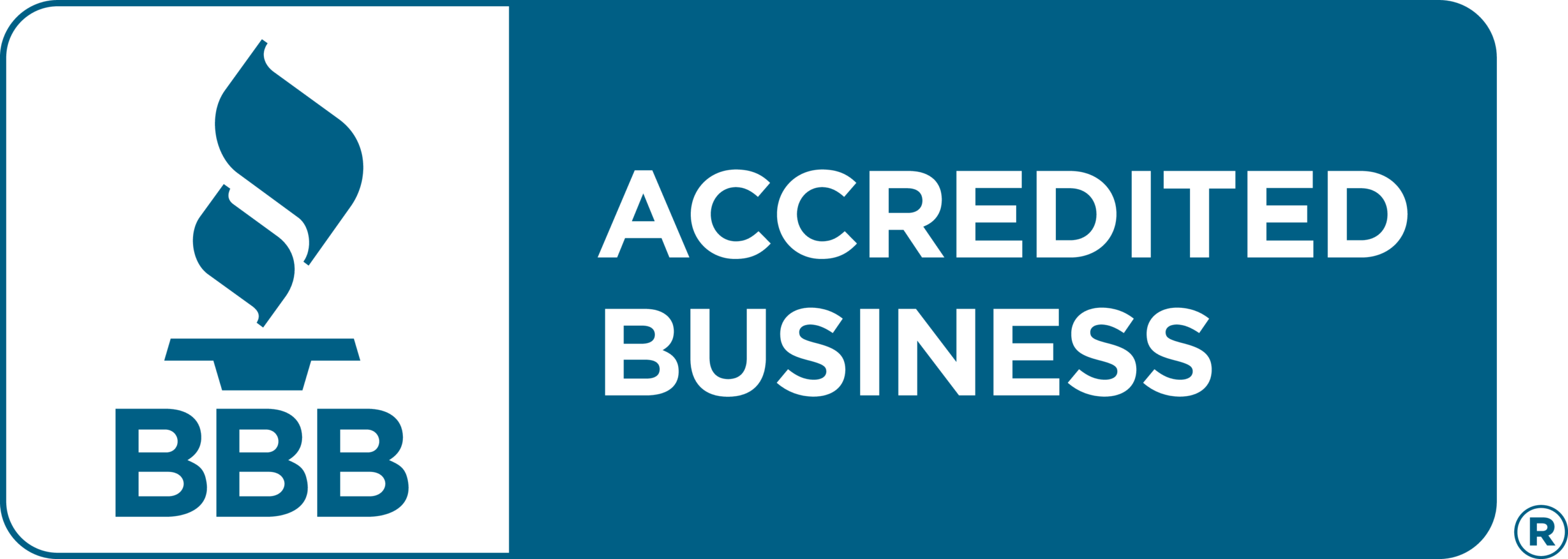A shareholder agreement provides a framework for a corporation’s operations and management from the perspective of its shareholders. This agreement, binding among a company’s shareholders, outlines their responsibilities, rights, and obligations, aiming to safeguard their interests while promoting the stability and prosperity of the business.
Insight Law Professional Corporation is a business law firm. Whether you’re just starting out, looking to expand, or facing legal challenges, our team is here to provide the strategic advice and legal solutions you need. If you need guidance on your shareholder agreement from a business lawyer, contact us and see how our firm can help.
- What is a Shareholder Agreement?
- What is a Shotgun Clause in a Shareholder Agreement?
- When is a Shareholder Agreement Required?
- Enforcement and Amendments of Shareholder Agreements
- Shareholder’s Agreement Benefits
- Shareholders Agreements: Important Clauses To Include
- Shareholder Rights under Ontario Law
- Share Structure and Governance
- Restrictions on Share Transfers
- Summary
- How We Can Help
What is a Shareholder Agreement?
A Shareholder Agreement is a contract between shareholders of a corporation that outlines the terms of their voting interests, rights, and obligations. It is also known as a shareholders’ agreement or a stockholders’ agreement. The purpose of a shareholder agreement is to establish rules regarding the company’s operations and ownership, ensuring that shareholders are treated fairly and their rights are protected.
This written agreement serves as a foundational document for the shareholders of a corporation, detailing how the business will be run and how key decisions will be made. There are two primary types of shareholder agreements: general shareholder agreements and unanimous shareholder agreements.
General Shareholder Agreement
A General Shareholder Agreement is a contract between a company’s shareholders that outlines their rights, responsibilities, and obligations. It helps prevent disputes by setting rules on decision-making, share transfers, dividends, and company management. This agreement protects shareholders’ interests, especially privately held businesses. It can also include clauses on dispute resolution, exit strategies, and voting rights.
Unanimous Shareholder Agreement
A Unanimous Shareholder Agreement is a legally binding contract that all corporation shareholders must agree to. It governs how the company is managed, restricts directors’ powers, and outlines shareholder rights and obligations. Unlike a general shareholder agreement, a unanimous shareholder agreement can override corporate law by shifting decision-making from directors to shareholders. It helps protect minority shareholders, regulate share transfers, and establish dispute resolution methods.

What is a Shotgun Clause in a Shareholder Agreement?
A shotgun clause, also known as a buy-sell agreement, is a mechanism in shareholder agreements that facilitates the resolution of deadlocks between shareholders by allowing one shareholder to offer to buy out another shareholder’s shares at a specified price. Upon making the offer, the receiving shareholder can either sell their shares at the offered price or buy the offering shareholder’s shares at the same price. This clause is particularly useful in closely held companies or partnerships where a shareholder’s exit or ownership change needs to be managed smoothly and without lengthy disputes.
When is a Shareholder Agreement Required?
A shareholder agreement is not mandatory for every corporation but is advisable for governance and to protect shareholder interests. This agreement becomes particularly important in privately held companies, start-ups, and family businesses where the number of shareholders is limited. In such cases, personal and business relationships can complicate decision-making and operational processes, making a formal agreement beneficial for clarifying roles and expectations.
When new investors are brought into a company, a shareholder agreement can define how these new relationships will function, detailing the rights and obligations of each party. While not universally mandatory, a shareholder agreement is a tool for managing various corporate governance issues.
Typically, a shareholder agreement is entered into either at the company’s formation or when its share ownership structure changes significantly, such as during new investment rounds or major shifts in leadership.
Enforcement and Amendments of Shareholder Agreements
A shareholder agreement is a binding document, and any breaches can be adjudicated in courts or arbitration, depending on the dispute resolution provisions of the agreement itself.
Amendments to the agreement require consent from the shareholders, usually at a threshold specified within the agreement, ensuring that they remain relevant and reflect the shareholders’ collective intentions.
Shareholder’s Agreement Benefits
Clarification of Rights and Responsibilities: Shareholder agreements specify each shareholder’s rights, responsibilities, and obligations, clarifying roles and expectations. This minimizes ambiguities and potential conflicts by ensuring everyone knows the rules governing their interactions and their stake in the company. Shareholder agreements typically outline the rights to dividends, voting powers, and responsibilities in funding and operational decisions. By explicitly stating these elements, the agreement ensures that all shareholders understand their role and the extent of their influence within the company.
Protection for Minority Shareholders: Protection for minority shareholders is a component of shareholder agreements, ensuring that these stakeholders are protected against any potential abuses by majority shareholders. Such agreements usually include specific provisions like tag-along rights, which enable minority shareholders to sell their shares under the same conditions as the majority, and anti-dilution protections to prevent the dilution of their ownership percentage. Additionally, certain decisions may require supermajority votes or even unanimous consent, giving minority shareholders a significant say in critical corporate decisions.
Enhanced Decision-Making Processes: Shareholder agreements usually outline the voting rights, quorum requirements, and procedures for board and shareholder meetings. These agreements streamline the decision-making process and ensure that all actions are taken with due consideration and fairness. By clearly defining how decisions are made, these agreements prevent deadlock situations and ensure that the company can respond quickly to business opportunities or challenges.
Dispute Resolution Mechanisms: Dispute resolution mechanisms typically include stipulations for mediation, arbitration, or a combination of both. These mechanisms provide a structured approach to resolving conflicts without litigation, helping to minimize the potential disruptions and legal costs associated with shareholder disagreements. Including such mechanisms expedites the resolution process and helps preserve business relationships and the overall corporate atmosphere, safeguarding the company’s operational effectiveness and reputation.
Succession Planning and Stability: Succession planning establishes protocols for transferring ownership and management if a shareholder decides to retire, pass away, or sell their shares. These provisions ensure a transition by defining who can buy shares and under what conditions, preventing potential disputes and disruptions in the company’s operations.
Customization and Flexibility: Customization and flexibility in shareholder agreements allow for the adaptation of governance structures to fit the specific needs and dynamics of a company and its shareholders. Unlike the rigid statutes of general corporate law, shareholder agreements can be tailored to address unique aspects such as specific voting rights, dividend policies, and succession planning. This customization ensures that the agreement remains relevant and effective throughout various phases of the company’s growth and changes in its shareholder base. Shareholder agreements enable shareholders to proactively design and adjust the terms of their collaboration, creating a cooperative environment that can swiftly adapt to new opportunities and challenges. This, in turn, supports the long-term success and resilience of the business.
Attracting Investment: Incorporating a shareholder agreement can be a strategic move for companies looking to attract potential investors. Such agreements provide a structured and transparent framework for governance and dispute resolution, which assures investors of the company’s commitment to stability and equitable treatment of its shareholders. By clearly outlining how decisions are made, how conflicts are resolved, and how shares can be bought or sold, shareholder agreements help reduce the perceived risks associated with governance and management uncertainties. This level of predictability and security appeals to investors as it indicates a well-managed organization with reduced risks of internal conflicts or disruptions that could negatively impact their investment.
Share Transfer Restrictions: Share transfer restrictions are provisions regulating the terms and conditions of transferring shares in shareholder agreements. These restrictions ensure that control over the company remains with a select group or aligns with strategic objectives. The most common types of share transfer restrictions include the right of first refusal, which allows existing shareholders or the company to buy shares before they are sold to an external party, and drag-along and tag-along rights, which protect minority shareholders by enabling them to join in a sale at the same terms as other selling shareholders. By implementing such constraints, shareholder agreements maintain continuity of ownership and control, prevent unwanted third-party interventions, and uphold the original investment intentions of the stakeholders.
Legal Certainty: Legal certainty ensures that the terms set within the document are enforceable, providing a secure legal framework that governs shareholder relations and corporate management. This clarity helps ensure that all parties know their legal standings and responsibilities, facilitating smoother operations and interactions within the company.
Exit Strategy: An exit strategy outlines the conditions and procedures for shareholders who wish to sell or transfer their shares. It typically involves buy-sell agreements, which specify trigger events such as retirement, death, or disagreement and determine how shares will be valued and transferred under these circumstances. By incorporating such strategies, the agreement ensures all parties clearly understand their options and the process for exiting, thereby avoiding potential conflicts and ensuring the company’s stability and continuity.

Shareholders Agreements: Important Clauses To Include
Shareholder agreements can establish clear terms for shareholders to exit the business and transfer their interests. A share transfer is a significant event for any business culture or corporation of a closely connected nature. Therefore, it might be important for certain businesses to have flexible provisions that balance the corporation’s interests and those of individual shareholders. Some of these important provisions relating to transfer of shares are as follows:
Management: Shareholders have the opportunity to specify important issues concerning the management and operation of the corporation. By doing so, they can proactively shape the direction of the corporation. Alternatively, if these issues are not explicitly defined, the responsibility for managing the corporation will fall solely on the Board of Directors, especially for a shareholder who wishes to take an active role in making crucial corporate decisions.
Right of First Refusal: This provision allows existing shareholders to purchase shares that another shareholder intends to sell before those shares are offered to external third parties. This protective measure allows shareholders to maintain their percentage ownership and protects them from undesirable shareholders. It is often used when existing shareholders or business partners want to retain ownership control or prevent undesirable outside investors from gaining significant influence in the company.
Pre-Emptive Rights: A pre-emptive right is a right that is granted to existing shareholders in a corporation, allowing them to purchase newly issued stock before it becomes available to others. This right is designed to safeguard current shareholders from any potential dilution in the value or control of their shares. Shareholders who buy these shares before they are sold to third parties can maintain their percentage share in the corporation.
Piggyback Rights: These rights protect minority shareholders when a majority shareholder intends to sell their shares to a third party. When a majority shareholder receives an offer to sell their shares to an external party, the piggyback right allows minority shareholders to “piggyback” or join the transaction and sell their shares. Due to their nature, they often discourage shareholders from actively seeking alternative purchasers for their shares.
Drag Along Rights: Shareholders (majority shareholders) with drag-along rights have the authority to force other shareholders (minority) to sell their shares to a third party making an offer. This right allows them to “drag along” or require minority shareholders to participate in the sale on the same terms and conditions if the majority shareholders receive a favourable offer from a third party to sell the company.
Shotgun Clause: A shotgun clause, also known as a “buy-sell” clause, grants a shareholder the authority to propose an offer to other shareholders to either purchase their shares at a certain price and terms or sell all his/her own shares. These clauses are commonly utilized as an exit strategy for shareholders who no longer wish to remain in the company, especially when relationships among shareholders have deteriorated.
Non-Solicitation: A non-solicitation clause prohibits shareholders from enticing others to depart from the corporation and compete against it. This clause is common practice, and its purpose is to prevent shareholders from soliciting employees.
Non-Compete Clause: A non-compete clause is a common practice that restricts shareholders from engaging in or starting a business that competes with the company during the term of the agreement or for a specified period after they cease to be shareholders. This clause protects the company’s interests by preventing shareholders from using the company’s confidential information, trade secrets, or client base to establish a competing enterprise. A non-compete clause should be specific in time and spatial limits.
Valuation: Unlike publicly traded companies with share values that are easier to determine, private corporations benefit from having a valuation clause for various reasons. In shareholders’ agreements, a provision typically outlines specific valuation methods to be employed when shares are transferred. This essential clause outlines the precise method for calculating the share’s worth, becoming crucial when shareholders intend to sell their shares or in the event of a shareholder’s passing, where the other shareholders may wish to purchase those shares, retirement, disability of a shareholder, etc.
Shareholder Rights under Ontario Law
There are two ways to incorporate your business in Canada: provincially or federally. The Ontario Business Corporations Act provides shareholders with certain rights and responsibilities that protect their interests and ensure proper corporate management. Main shareholders’ rights under Ontario law include, but not limited to:
Voting Rights: The fundamental right to vote is at the core of a shareholder’s rights. Shareholders use this right to vote on matters affecting the corporation, such as electing the board of directors or approving significant corporate transactions. By exercising their voting rights in alignment with their class of shares and holding percentage, they contribute to the corporation’s decision-making process.
Not all shareholders have the right to vote. This type of rights might be limited to certain shares in the articles of incorporation and corporate by-laws.
Access to Information and Inspection Rights: Shareholders have the right to inspect corporate records, including financial statements, minutes of meetings, and shareholder lists. Section 140(1) of the Ontario Business Corporations Act (OBCA) outlines the corporation’s obligation to prepare and maintain a designated corporate minute book, which includes essential documents such as articles and by-laws of the corporation, any amendments made to them, copies of Shareholders Agreements or Unanimous Shareholders Agreements known to the directors, minutes of meetings and resolutions of both directors and shareholders, as well as copies of the director’s register, officer’s register, shareholder’s register, and shareholder’s ledger.
A well-maintained corporate record will provide transparency and facilitate shareholders’ access to crucial information to make well-informed voting decisions. If you are denied access to corporate or financial information, your shareholder right might be violated, and you might be entitled to an oppression remedy.
Audited Financial Statements Rights: A crucial right held by shareholders is that they can request the corporation to undergo an audit of its financial statements. According to Sections 155 and 159(1) of the Ontario Business Corporations Act (OBCA), a corporation’s annual financial statements must be audited by a qualified auditor unless all shareholders agree to waive the audit requirement. If a shareholder disagrees with exempting the corporation from the audit, the corporation must conduct the audit and allow the shareholder to review the audited financial statements.
Meetings and Attendance: A corporation must convene an annual shareholders meeting within fifteen months following the previous annual meeting under the Ontario Business Corporations Act (OBCA). Additionally, the corporation can hold special meetings at any time as needed. Generally, shareholders’ meetings are scheduled annually, occurring every 12 months. However, in some instances, shareholders may adopt an annual resolution instead of holding a physical meeting, which is a common practice in small business corporations. This resolution serves as a substitute for a formal shareholders’ meeting and allows shareholders to fulfill their obligations and make decisions regarding the corporation’s annual matters in a streamlined manner.

Share Structure and Governance
A shareholder agreement can outline the share structure and governance of the corporation, including the classes and maximum number of shares the corporation is authorized to issue. It can also specify the rights and responsibilities of shareholders, including voting rights, dividend payments, and the transfer of shares. The agreement can provide for the corporation’s management, including the appointment of directors and officers and the decision-making process.
Restrictions on Share Transfers
A shareholder agreement can include restrictions on share transfers, such as pre-emptive rights, tag-along rights, and drag-along rights. These clauses can help prevent unlawful or disadvantageous share transfers and ensure that shareholders are treated fairly. The agreement can also provide for the transfer of shares in the event of a shareholder’s death, disability, or resignation. Additionally, it can outline the process for resolving disputes among shareholders and provide for alternative dispute resolution methods, such as mediation or arbitration.
Pre-emptive rights allow existing shareholders to purchase shares before they are offered to external parties, maintaining their ownership percentage and control. Tag-along rights protect minority shareholders by allowing them to join in a sale under the same terms as the majority shareholder. Drag-along rights enable majority shareholders to compel minority shareholders to sell their shares in a sale, ensuring a smooth transaction.
Summary
Shareholder agreements provide a structured approach to managing a company’s affairs and protecting shareholder interests. For any corporation, especially those with multiple shareholders or complex operations, having a shareholder agreement is beneficial for ensuring long-term success among its investors.
The information provided above is of a general nature and should not be considered legal advice. Every transaction or circumstance is unique, and obtaining specific legal advice is necessary to address your particular requirements. Therefore, if you have any legal questions, it is recommended that you consult with a lawyer.







